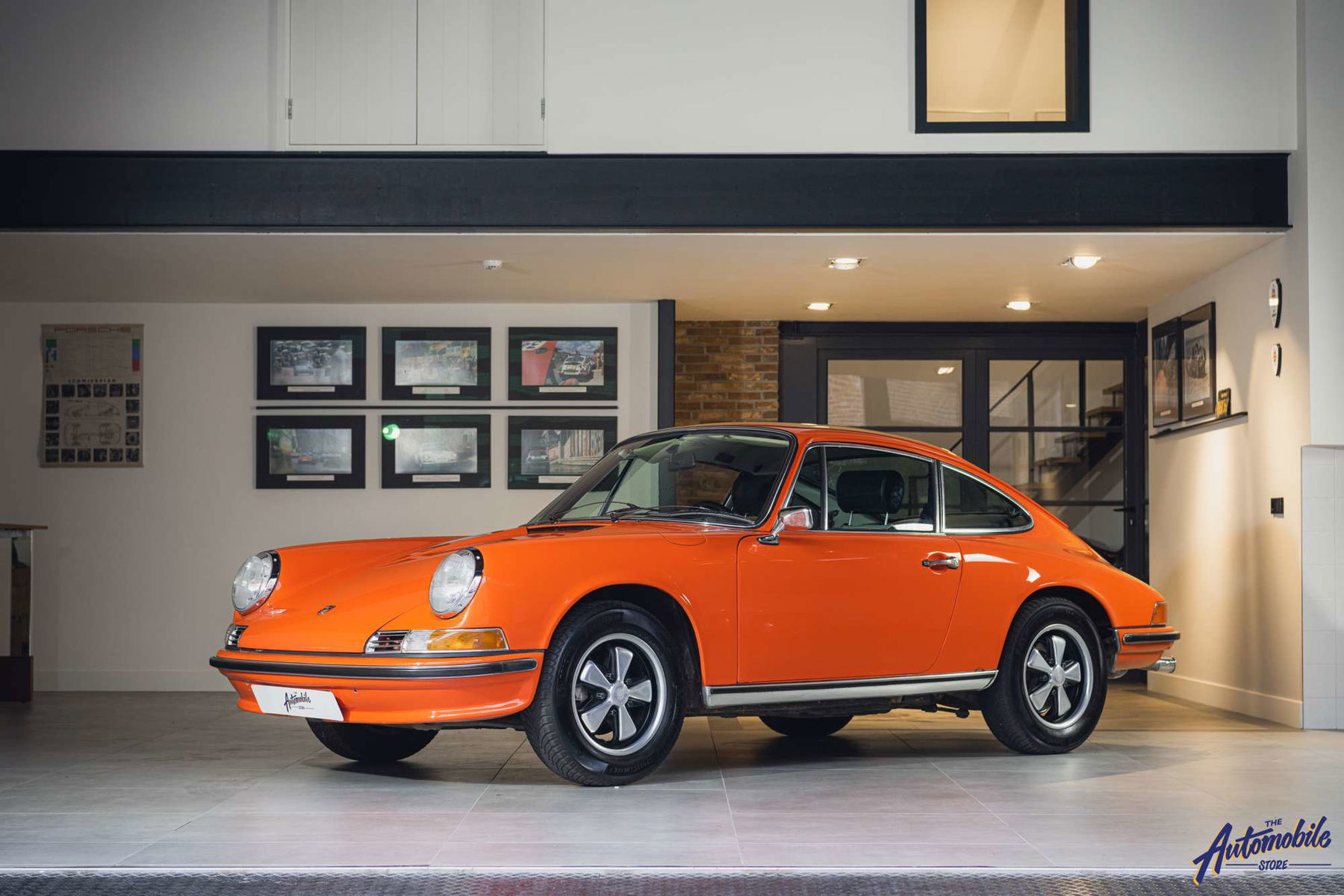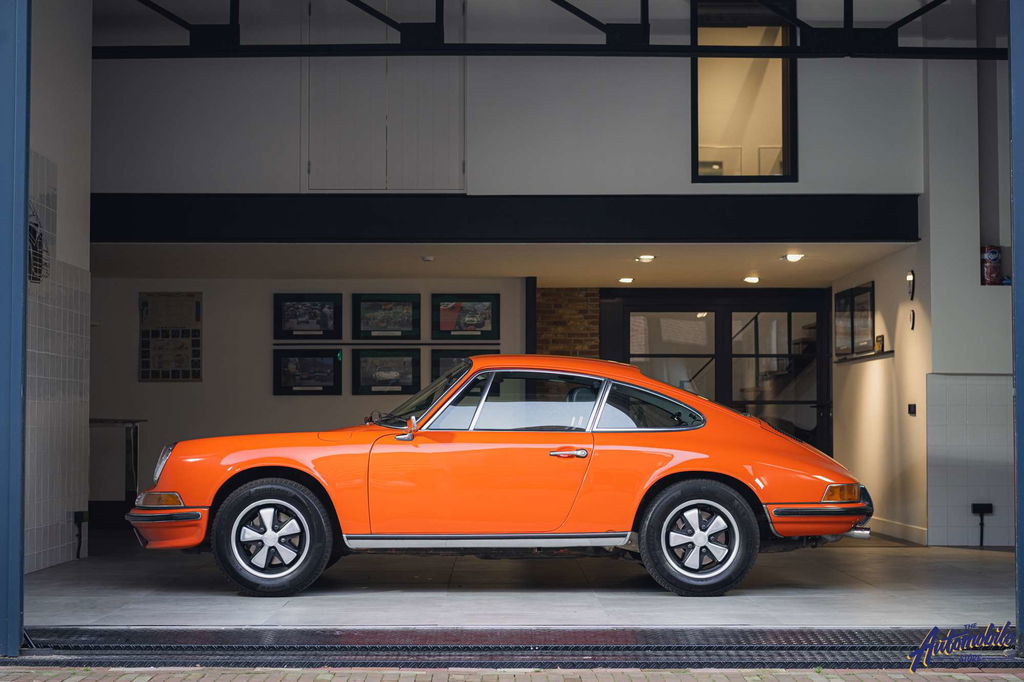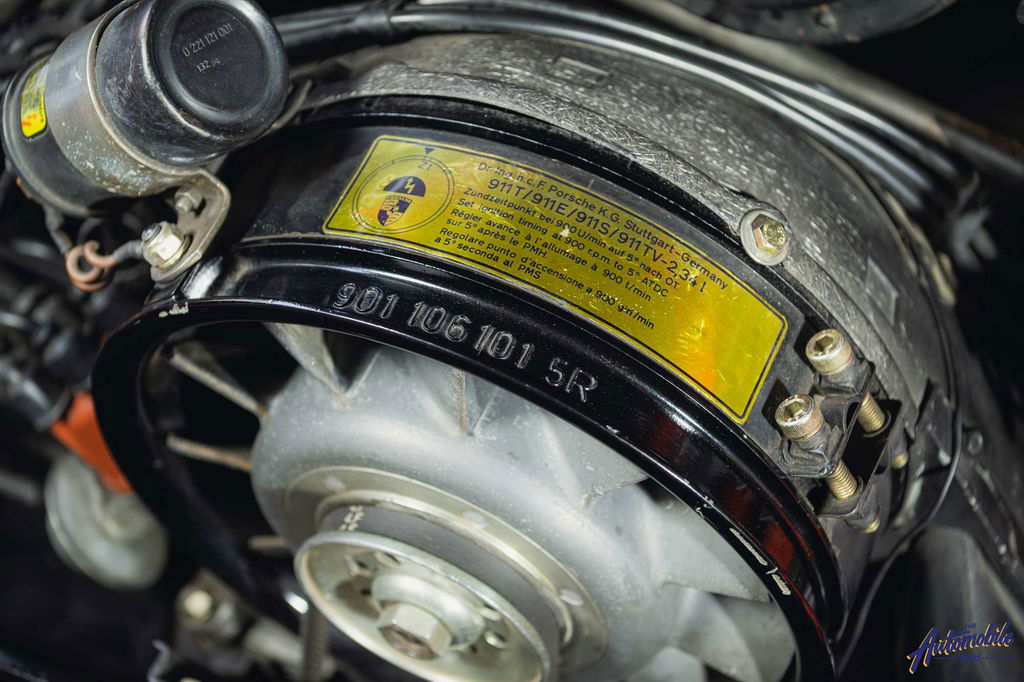This particular example is left the factory in 1971 and is an early 72 model year example. This means it has the now popular Ölklappe design. This means that there is an additional filler cap for oil on the right side of the 911. Early 911 owners know that the dry sump system is difficult to gauge and fill up. Porsche decided to tackle this problem by placing the filler cap on the outer body of the car. This proved to be a costly mistake because a lot of petrol pumps had full-service employees who filled up your car. Imagine the confusion when there were two filler caps. The confusion grew when the majority of the cars had the filler cap on the rear side of the car. You can imagine what happened and this resulted in the deletion of this so called Ölklappe in the next and last production year of the classic 911 F-model.
However not all was bad for the ‘72 production model. The engine size was now 2.4 from its initial 2.0 which meant more power and torque. Especially the increase in torque makes the car drive much more refined and gives the driver the possibility to explore the duality pf the 911. You can doddle along for days without overheating just cruising wherever you want to go. But you can definitely tare up any track, hill climb, rally, or alpine pass in full throttle.
The 911 was delivered in Germany and was ordered in the beautiful signal orange with comfort seats and a 5-speed transmission and a radio. Times where simpler back than just some options but you could actually choose from multiple colors instead of the nondescript shade of grey nowadays.
The car is matching numbers and runs and drives really light a responsive. Her previous owner entered a few rallies and to preserve the undercarriage and drivetrain the 911 was raised. This is easily returnable because of the torsion bar suspension on an early 911.
In short if you are looking for a 911 that you can actuality use and enjoy without worrying about the paint etc. Just call me and I will be happy to take you along for a thrilling test-drive.






























































